Lean & Water Toolkit: Chapter 4
Lean and Water Efficiency Improvement Strategies
- Kaizen Events and Just-Do-Its to Reduce Water Use
- Integrate Water Efficiency into Everyday Lean Practices
- Lean and Water Applications for Facility Operations and Support Processes
- To Consider
- Toolkit Navigation
Kaizen Events and Just-Do-Its to Reduce Water Use
There are three key questions to ask to identify water-efficiency opportunities:
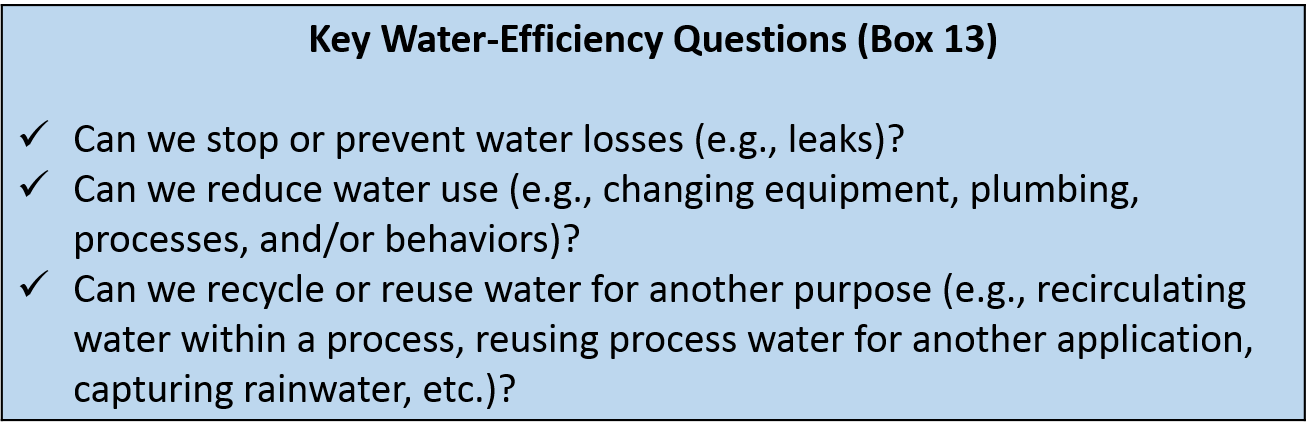


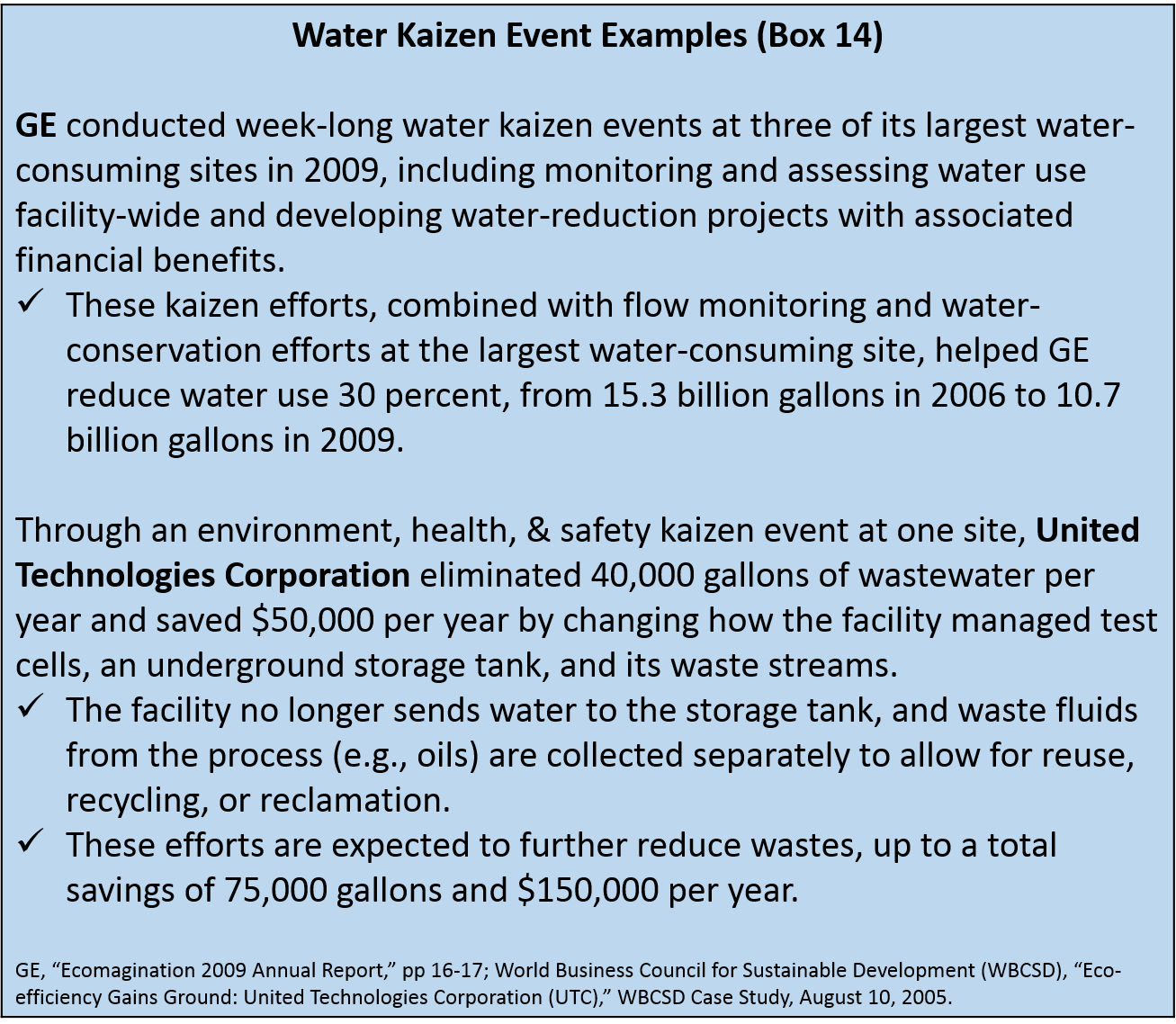
-

- Kaizen Events on Water-Using Processes: Even if the main objective of a kaizen event is not water efficiency, it’s helpful to keep an eye out for water-efficiency opportunities. There may be opportunities to reduce water use, such as by adjusting equipment or reusing water, while also improving other aspects of the process. Use the Key Water-Efficiency Questions in Box 13 above to identify water-savings opportunities.
Often when you’re looking for water waste, perhaps while using strategies described in the last chapter, you’ll find easy solutions that can be

Water Efficiency Strategies
Ways to reduce water use range from simple strategies, such as adjusting the flow of water or installing water-saving devices on equipment, to more involved options such as reusing water or changing to a low-water or waterless process. There are five general types of water-saving strategies (see Figure 15). Consider these strategies as you brainstorm improvement ideas in kaizen events and other Lean efforts. Key things to keep in mind include:
- Consider water efficiency improvements in the context of other process improvements and Lean performance goals, in order to get the best results.
- Evaluate how the process changes might affect wastewater volume or quality, or have other environmental impacts. (For example, switching from a water-based lubricant to an oil-based lubricant or solvent could have implications for worker health and/or the environment.)
- Consider which water-efficiency best management practices and technologies make sense for your facility.
- Adopt visual controls, “mistake proof” devices on equipment (e.g., automatic shut offs), and/or procedures to help ensure that process changes are effective and can be easily maintained.
- After testing potential solutions, making changes, and evaluating actual performance, be sure to develop or update the standard work for the activity so that workers can easily identify the current, best way to perform an activity. (Standard work is also further discussed below.)





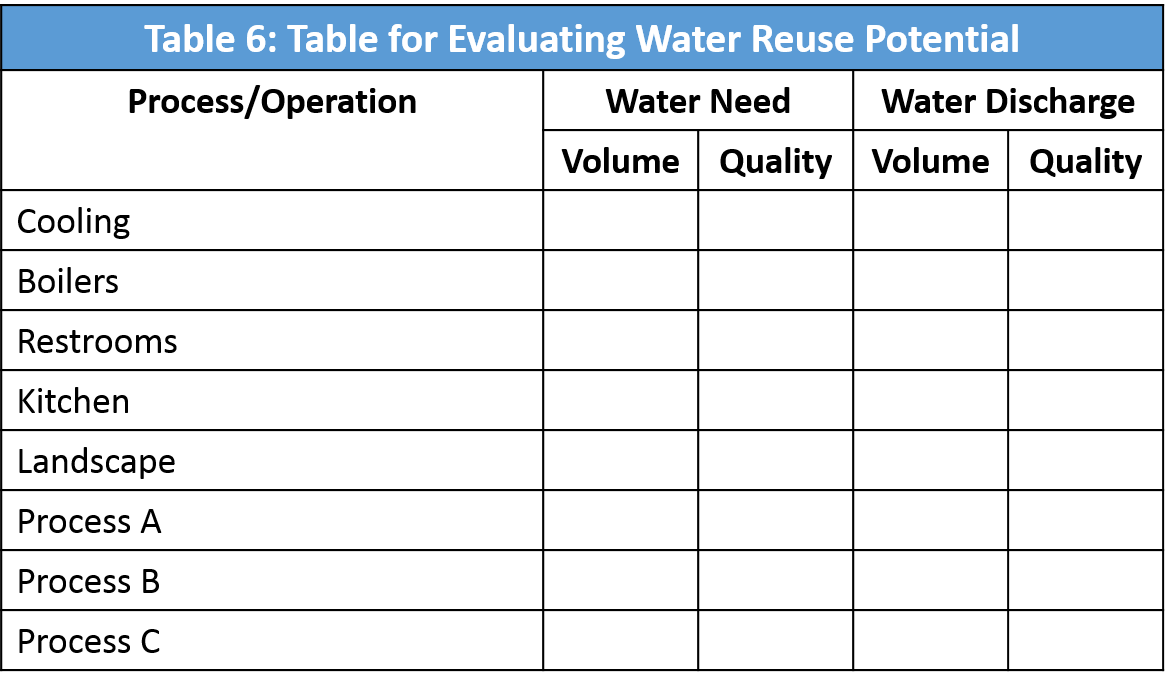
Integrate Water Efficiency into Everyday Lean Practices
A variety of Lean tools—including standard work, visual controls, 5S, and total productive maintenance (TPM)—help workers identify and eliminate waste in their daily activities, as described further below. Along with other wastes, these Lean tools can reinforce and promote strategies to reduce unnecessary water use.
Waste Elimination Culture
You can integrate water efficiency into the “culture of Lean” at your facility, developing the capacity of your employees to identify water waste in their normal work practices and find solutions that help meet your facility’s Lean and water goals. When your workers are passionate about improving the way your facility uses water, the gains you achieve can become self-sustaining into the future.
Lean is built around the framework of eliminating waste and striving for perfection, or “True North,” as discussed in Chapter 1. It is most successful when employees are fully engaged in driving out waste and identifying improvement opportunities. In the long run, developing people to be effective problem solvers is more important than implementing specific tools. It is critical, therefore, to train employees on how to identify water waste and to encourage and motivate them to work towards your organization’s water efficiency goals. The use of goals or targets combined with incentives and support resources can be a powerful way to drive change and performance improvement. Frito-Lay’s “Gallon per Pound Challenge” Program, described in Box 16, provides an example of a successful water efficiency program anchored by metrics and employee engagement.
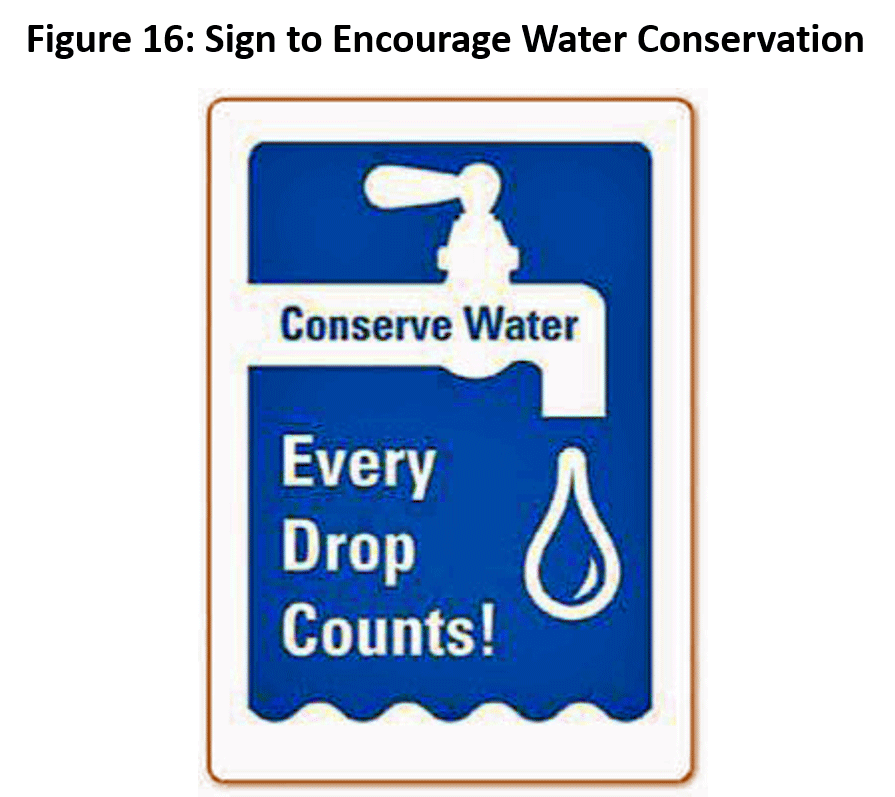
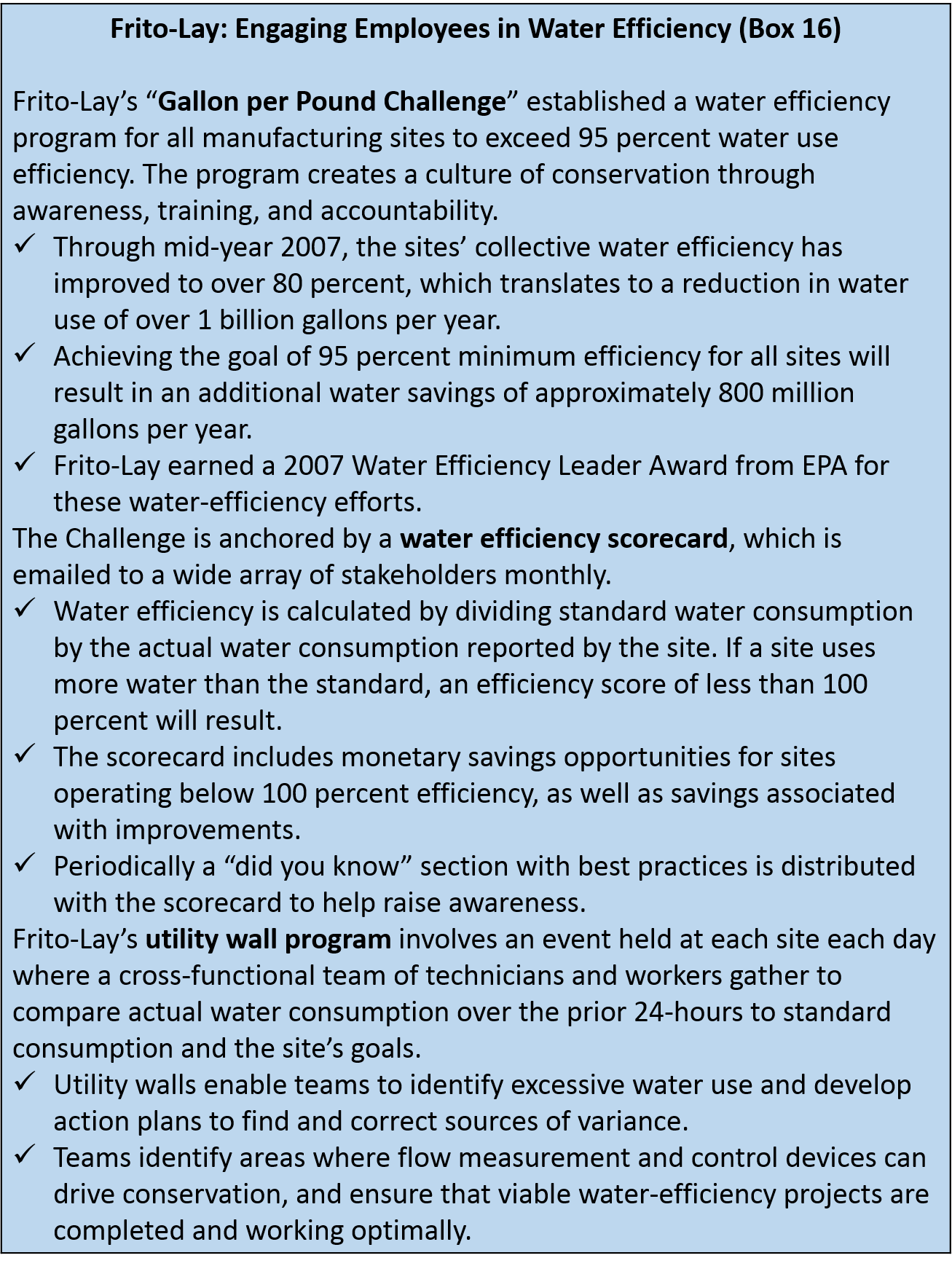
Standard Work


Visual Controls

Visual controls are essential for supporting behavior-based water efficiency strategies. Examples of visual controls to encourage water efficiency include:
- Signs to encourage employees to use less water
- Placards on water-using equipment showing proper operation (e.g., could include optimum water flow level)
- Water meters or sub-meters on high water using processes or equipment (see discussion in chapter 3)
- Displays of facility water use and water-use reduction goals on production control boards, along with other performance metrics (cost, quality, time, safety, environmental, etc.)
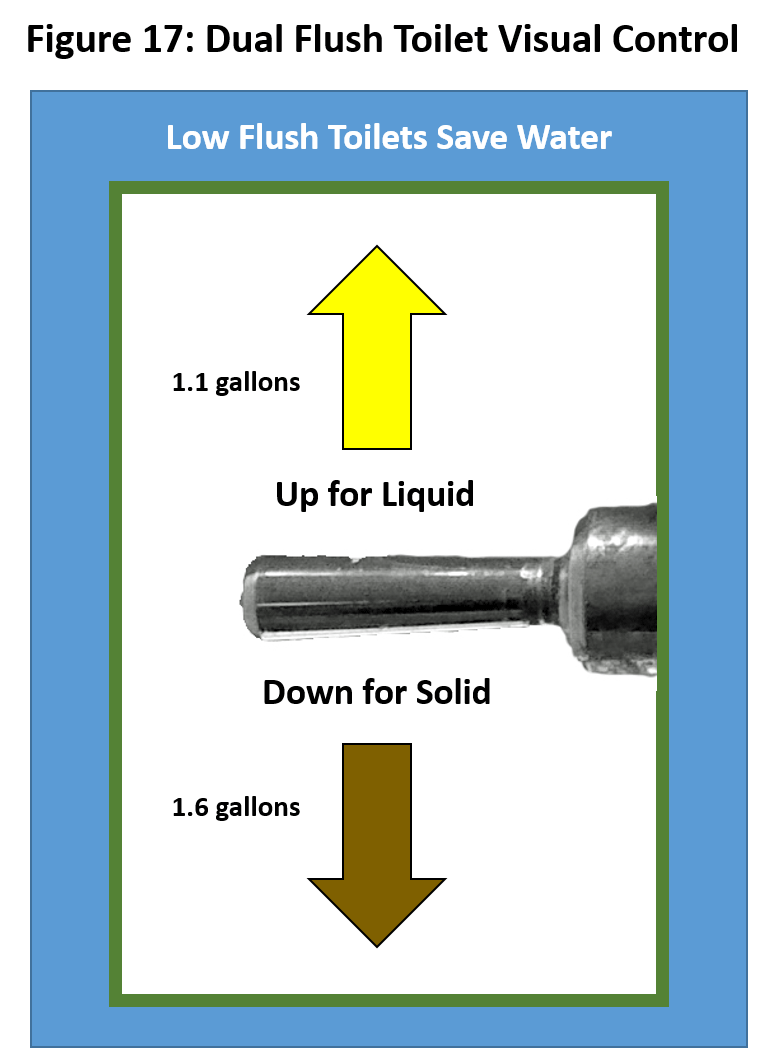
5S
Another way to incorporate water efficiency into Lean is through 5S. 5S is a systematic, five-step process used to create and maintain a clean, orderly work environment. Many organizations add a sixth “S” for safety, creating 6S (5S + Safety). The six pillars of 6S consist of:
- Safety (Respect workplace and employee): Create a safe place to work by removing workplace hazards.
- Sort (Get rid of it): Separate items that are not needed in the work area.
- Set in order (Organize): Organize the items that remain in the work area.
- Shine (Clean and solve): Clean and inspect equipment and the work area.
- Standardize (Make consistent): Standardize cleaning, inspection, and safety practices.
- Sustain (Keep it up): Maintain a clean, orderly, and safe work area.
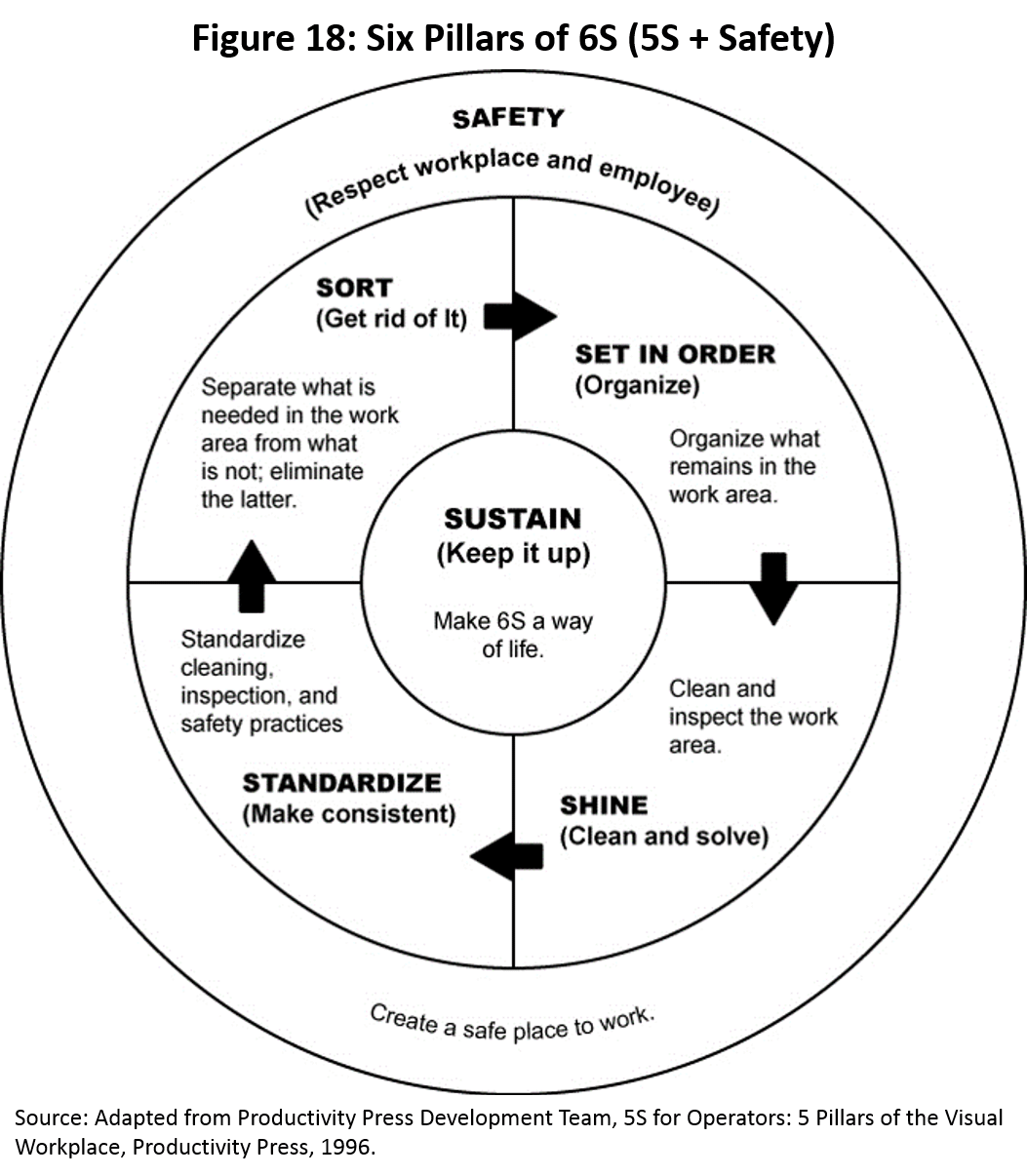
Since employees work attentively to maintain a clean and neat work environment in 5S, it presents a good opportunity to spot water waste. In daily 5S shop floor sweeps, encourage employees to check for water leaks in pipes, hoses, plumbing fixtures, and equipment, as well as turn off water that shouldn’t be running. Add checking for leaks to 5S checklists and other approaches implemented under “Standardize” and “Sustain” steps, so it becomes standard practice.
Water considerations are also relevant to “Safety.” Preventing water from being on the shop floor and walkways can eliminate slipping hazards. Repairing hot water and steam leaks can prevent burns.
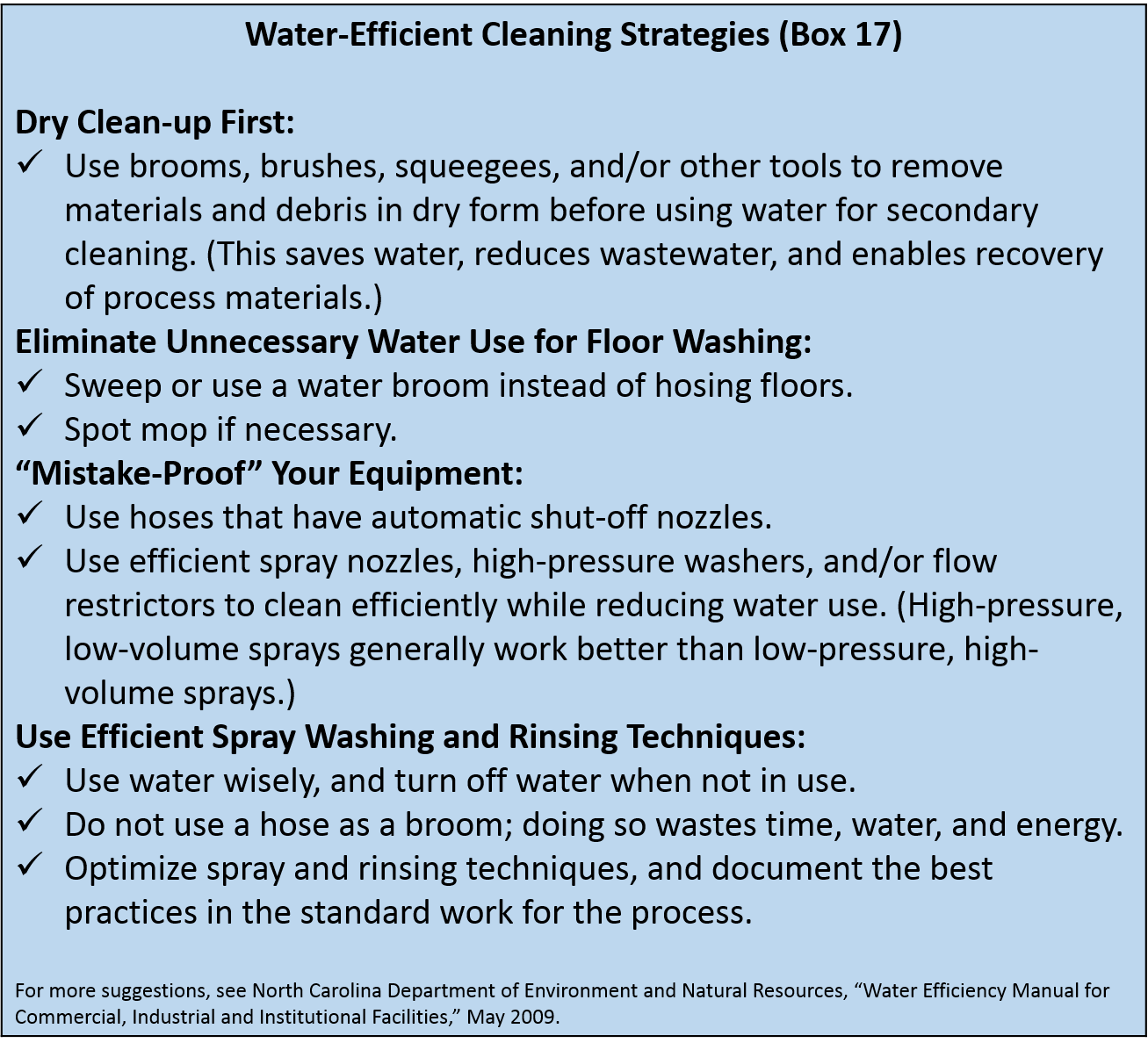
Total Productive Maintenance

A key practice in TPM is to maintain equipment in a manner that enables workers to quickly identify and correct problems that may result in leaks or spills. Since many facility operations use water, not just production processes, it’s important to extend the preventative maintenance

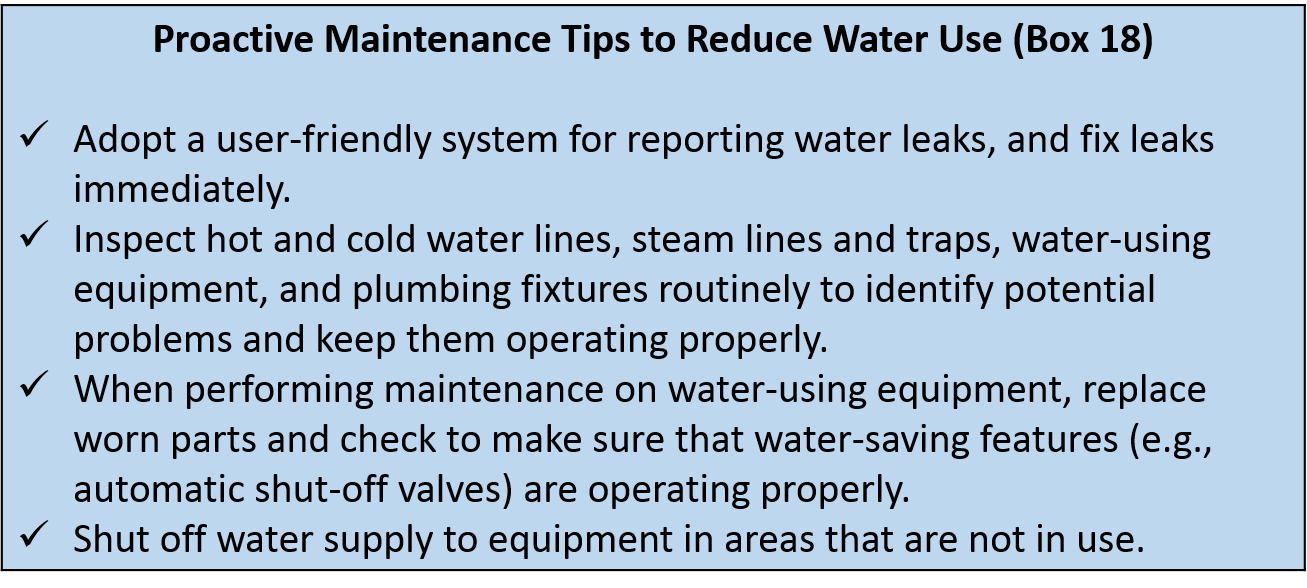
Lean and Water Applications for Facility Operations and Support Processes
As noted earlier, the most water-consuming aspects of your facility may not be production processes; other facility water uses include cooling towers (which are often the largest water end use), boilers, support processes, restrooms, kitchens, and irrigation. Water balances, value

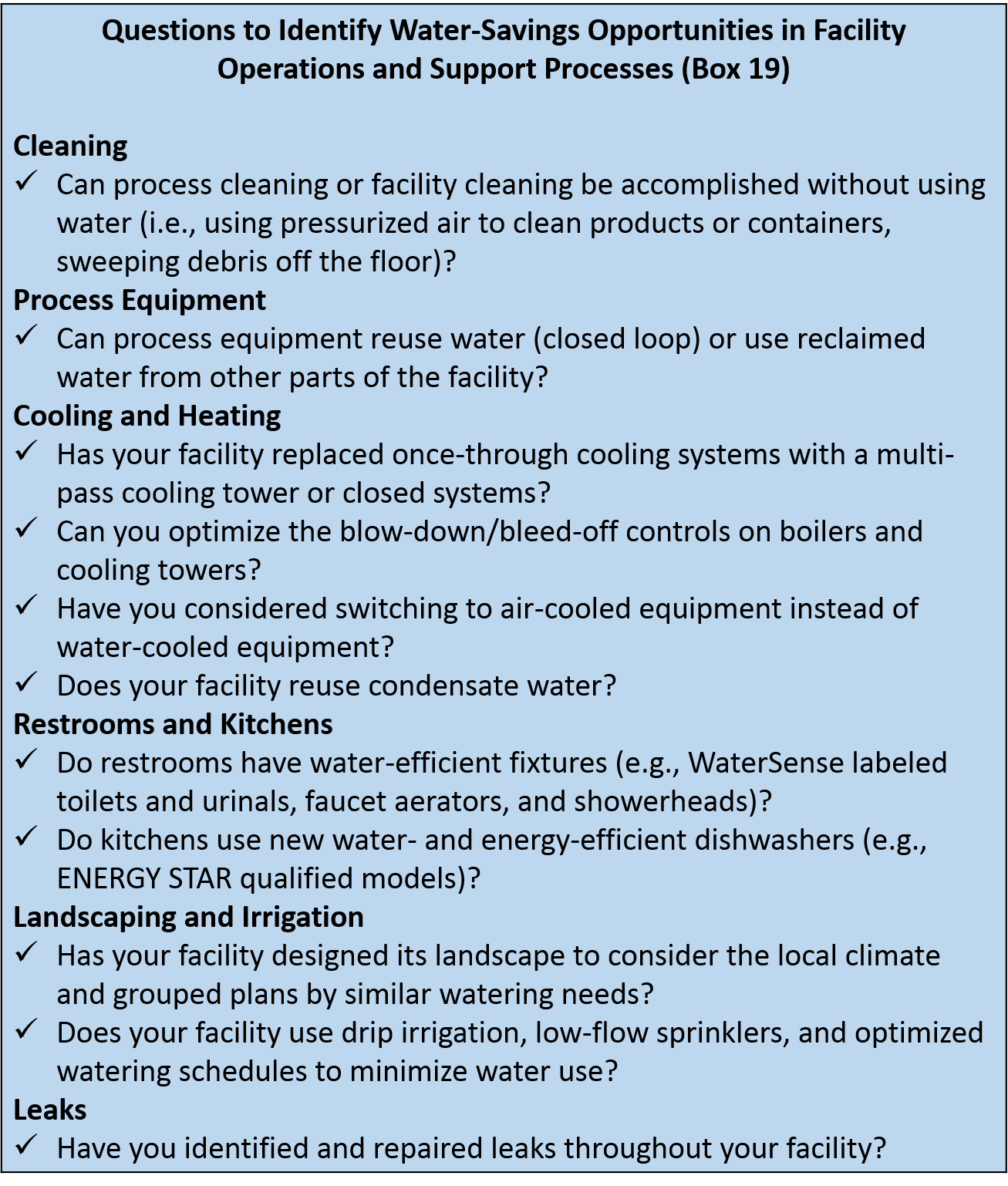

Along with the questions in Box 19 and Appendix D, a wide array of resources are available that provide information on low-cost, water-efficiency measures for common components of facility operations, as well as resources that provide guidance and examples relevant to specific industries. Consider these water-efficiency strategies in your Lean improvement projects.
Toolkit Navigation
- Contents & Acknowledgements
- Executive Summary
- Preface
- Chapter 1: Introduction
- Chapter 2: Water Use and Water Waste at Industrial Facilities
- Chapter 3: Finding Water Waste on the Factory Floor
- Chapter 4: Lean and Water Efficiency Improvement Strategies
- Chapter 5: Lean and Water Beyond the Factory Floor
- Chapter 6: Conclusion
- Appendix A: Water Efficiency Resources and Technical Assistance Providers
- Appendix B: Water Cost Calculator
- Appendix C: Water Unit Conversions and Calculations
- Appendix D: Water Efficiency Opportunity Checklist
- Appendix E: Glossary of Water Terms
